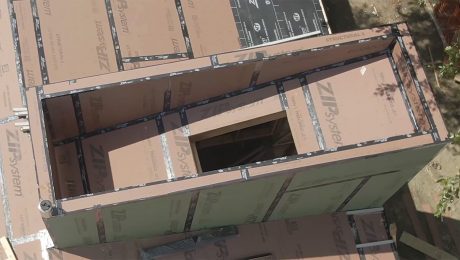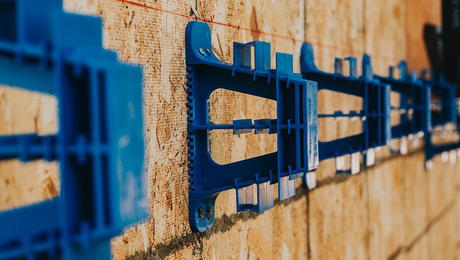Q:
My home was built in 1953 with two brick fireplaces. Even with the glass doors and the flue dampers closed, I can feel drafts. What can I do to stop this air leakage?
Jeffrey Johnston, Arlington Heights, IL
A:
Marc Rosenbaum, P.E., of Energysmiths in Meriden, New Hampshire, replies: I have never found completely airtight glass doors for fireplace use, but a chimney-top damper will solve the leaky fireplace throat-damper problem. These products close the chimney off tightly at the top of the flue and can be retrofitted to an existing chimney. Chimney-top dampers are operated by a lever mounted in the firebox, so they can be opened and closed from inside the living space.
The only possible disadvantage to a chimney-top damper is that it adds a slight restriction to the flue, so a fireplace with a marginal draft may begin to smoke more readily. Also, if there are cracks in the flue, the likelihood of pulling smoke from an operating flue to an adjacent one— which has the chimney-top damper closed—may increase. Flues that are not tight are serious hazards. Have a chimney sweep visually check the integrity of your flues before installing any new chimney product.
Two manufacturers make chimney-top dampers: Chim-A-Lator Co. (8824 Wentworth Ave., Bloomington, Minn. 55420, 612-884-7274) and Lyemance International (P.O. Box 505, Jeffersonville, Ind. 47131, 812-288-9953).
Both manufacturers also make models that include an integral chimney cap with coarse metal mesh that keeps out varmints, even when the damper is open. The two companies make many other accessories, including outdoor combustion air intakes designed to be built into the fireplace floor or sidewall. An outdoor combustion-air intake cuts down on drafts occupants feel when the fireplace is operating because the fire no longer needs to get all of its makeup air from the room.


























View Comments
Where are the dates these articles are written? It makes it impossible to tell how old/new the technology and materials are.